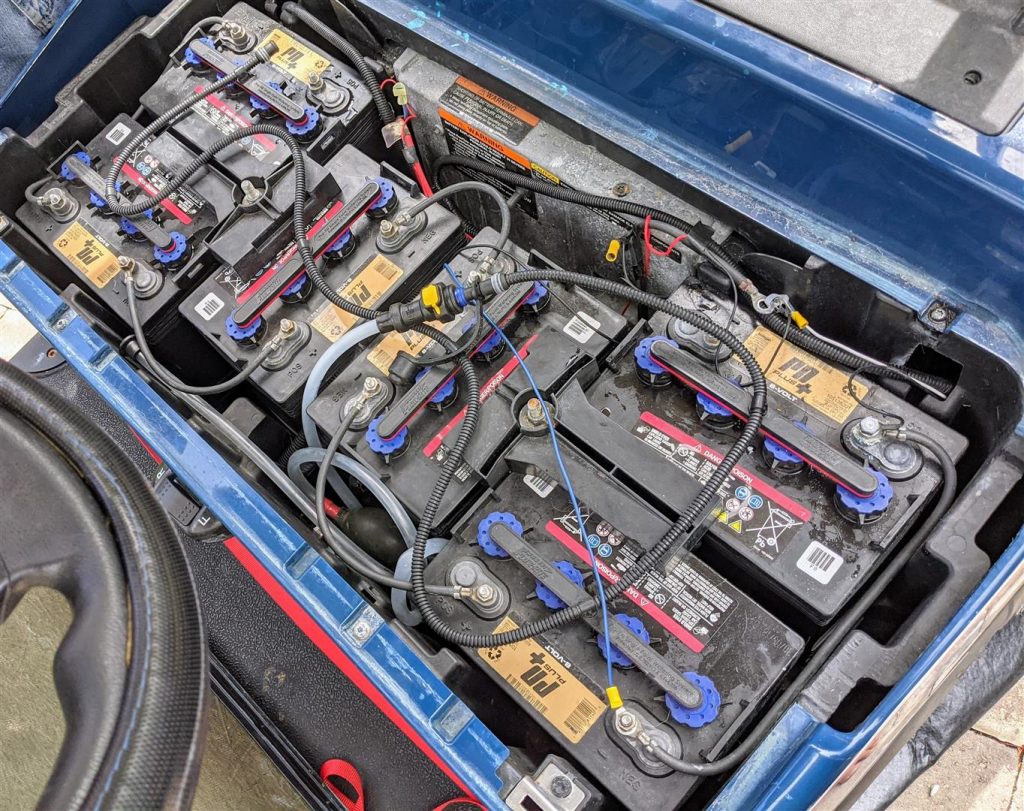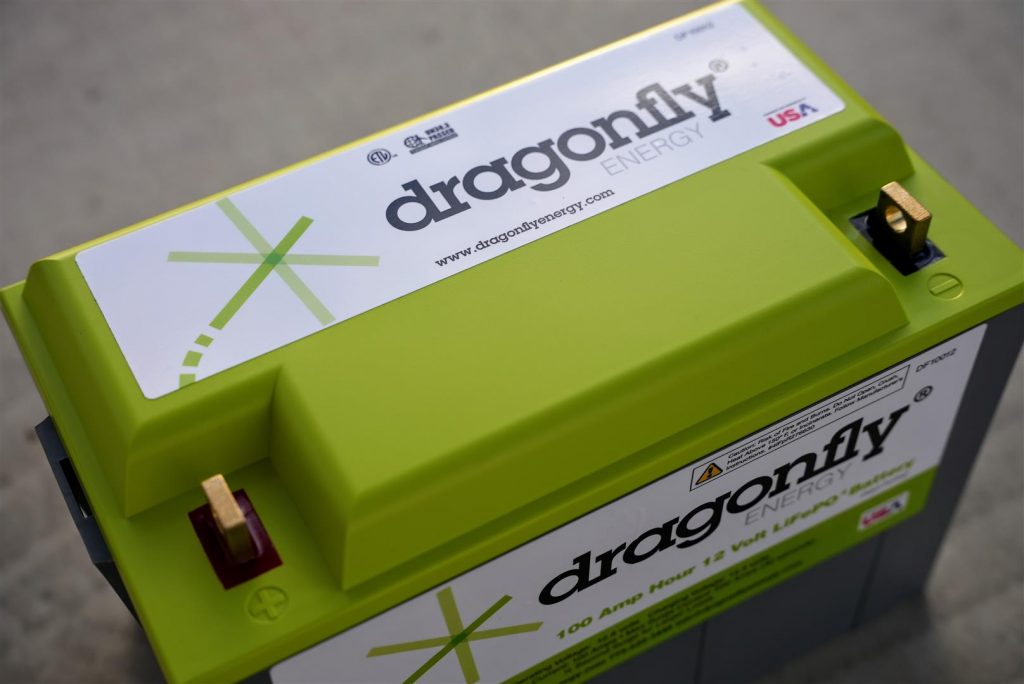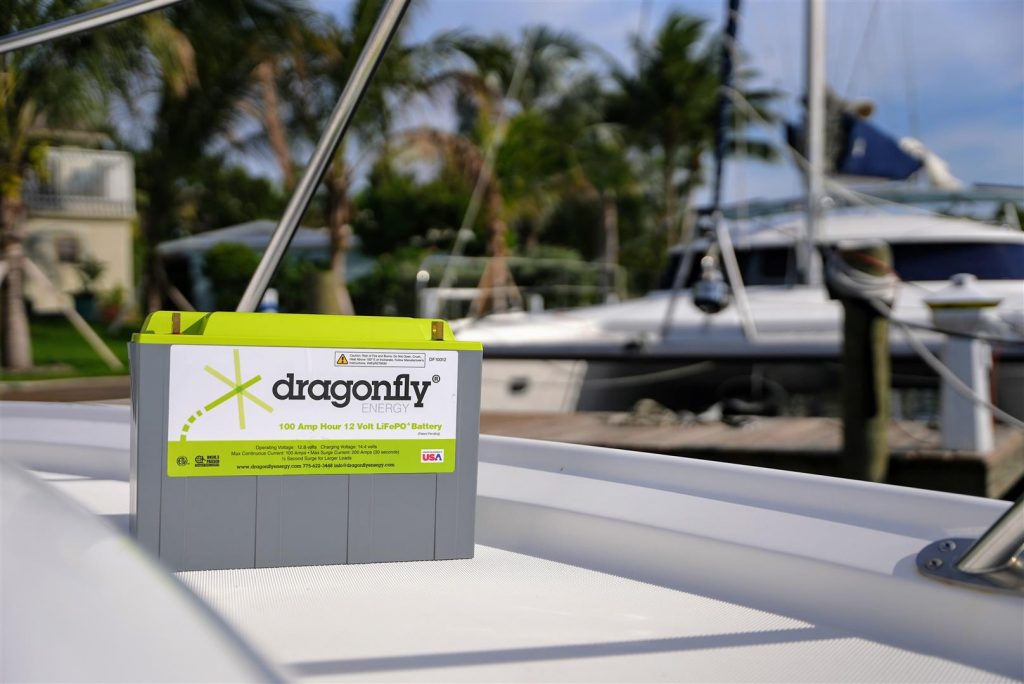Until recently, renewable energy storage has been a limiting factor in the global shift to clean energy replacing fossil fuels. Looking to renewable energy as part of the solution to climate change has made solving the storage problem more pressing than ever.
Advances in lagging battery technology have been essential in unlocking this bottleneck and lithium-ion batteries play a significant role.

What Is Renewable Energy?
Renewable energy comes from infinitely sustainable sources. The most commonly known renewable energy sources are wind, solar, and hydropower. However, other renewable sources such as geothermal, biomass, and harnessing tidal shifts in the ocean are fantastic options as well.
Renewable energy is the fastest-growing energy source in the United States and globally. This growth is driven by policy changes, such as tax incentives and tariffs, combined with market conditions reducing costs. It’s quickly becoming financially advantageous for businesses and individuals to make the switch to renewable energy.
Globally, hydropower is the leading source of renewable energy and mainly comes from large hydroelectric dams. Wind power is the second most popular renewable energy source and comes from large wind turbines that typically produce 2-5 megawatts of power. Solar generation is the fastest-growing source and is projected to provide 48% of renewable power in the US by 2050.
Why Batteries Created a Renewable Energy Storage Bottleneck
Some renewable sources of energy, specifically wind and solar, don’t generate power constantly. As you can imagine, wind turbines only produce power when the wind is blowing, and solar panels only work when it’s relatively sunny. Storing captured wind and solar energy to be used when the demand exceeds the supply is critical for unlocking renewable energy at scale.
Batteries are the primary method of renewable energy storage and battery technology has lagged behind advances in wind and solar production. Up until recently, the industry has relied on outdated lead-acid batteries. Unfortunately, lead-acid batteries are heavy, inefficient, contain toxic chemicals, and are expensive to maintain and replace. The relatively recent introduction of lithium batteries has opened new possibilities for scaling renewable energy storage by solving many of the drawbacks of lead-acid batteries.
Types of Batteries for Renewable Energy Storage
The two best options for storing renewable energy are lead-acid and lithium-ion deep-cycle batteries. Let’s take a look at each of them and how lithium is helping open new possibilities.
Lead-Acid
Historically, lead-acid batteries have been the most common type of battery for storing renewable energy. Lead-acid batteries are made of lead plates suspended in a sulfuric acid solution creating a chemical reaction allowing energy to be stored.
Lead-acid batteries are the most common and lowest cost type of deep-cycle battery. Unfortunately, the technology in lead-acid batteries hasn’t changed much over time and they suffer from some significant drawbacks. The internal lead plates make lead-acid batteries heavy, and the sulfuric acid solution needs to be constantly monitored and refilled. Additionally, draining lead-acid batteries below 50% of their capacity damages them and shortens their life.

These limitations on lead-acid batteries are undesirable and have slowed the adoption of renewable energy. For example, to build an off-grid solar or wind power system, you’d need to have a large bank of heavy batteries with toxic chemicals in them that require constant maintenance. Additionally, the life span of a lead-acid battery is typically 2-5 years. This means that you will be replacing your batteries every few years and having to dispose of your spent ones.
These issues are an annoyance at the consumer level but aren’t sustainable or scalable for commercial applications. For instance, a utility company or large business would need to employ a team of people to perform the maintenance and monitoring of the batteries and would continually be replacing batteries.
Lithium-Ion
Lithium-ion batteries use lithium salt to create a chemical reaction to store energy instead of lead plates and sulfuric acid. The construction and chemistry of lithium make them lighter, safer, more efficient, and easier to maintain than their lead-acid counterparts.
The only potential downside to lithium batteries is that they have a high upfront cost. However, as you take a closer look, the advantages of lithium batteries provide overall cost savings throughout the life of the battery.

Advantages of Using Lithium-Ion Batteries
Let’s take a closer look at some of the advantages of using lithium batteries for renewable energy storage.
More Efficient
Lithium batteries offer three main benefits that make them more efficient than lead-acid batteries. They’re lighter, they charge faster, and more of their rated capacity is usable on each charge.
Draining a lead-acid battery below 50% of the rated capacity reduces the battery’s life and causes harm. In contrast, you can use more than 80% of a lithium battery’s capacity without causing damage. This results in lithium batteries having about twice the usable capacity per charge as lead-acid batteries.
Beyond the increased capacity of lithium batteries, their lack of lead plates makes them weigh about half of what lead-acid batteries do. Additionally, with the correct charge controller, they charge up to five times faster as well!
More Cost-Effective
Lithium batteries start at about $900 compared to lead-acid batteries, costing as little as $100. The high upfront cost can initially seem overwhelming. But, lithium batteries often result in an overall cost reduction when you take a closer look.
Since lithium batteries provide about twice the usable capacity, you need half as many batteries. Additionally, the life of a lead-acid battery is between 2-5 years, whereas lithium batteries typically last more than 10 years.
Less Maintenance
Lithium batteries have an integrated battery management system (BMS) that monitors the health of the battery cells and ensures the battery is operating within its safe limits. The BMS essentially eliminates the need for maintenance on your lithium batteries. Once installed, you can forget about them.
Safer
The internal BMS results in lithium batteries being safer as well. One of the concerns in all batteries is thermal runaway. Thermal runaway occurs when batteries get too hot and a chain reaction happens, causing the battery to overheat and possibly even catch on fire. The internal BMS monitors the temperature of the battery cells and shuts them down to prevent thermal runaway if it detects unsafe conditions.
Longer Lifespan
Lead-acid batteries can only handle a few hundred charge cycles over their 2-5 year life span. On the other hand, lithium batteries can sustain 3,000-5,000 charge cycles and last more than a decade. It’s not uncommon to see lithium battery manufacturers offering 10-year warranties on their batteries.
Non-Toxic / Environmentally Friendly
Lead-acid batteries must be carefully handled and disposed of because they contain toxic chemicals and materials dangerous to people and the environment. Lithium batteries should still be handled with care and properly recycled; however, they don’t contain the same toxic chemicals as lead-acid batteries.
How Lithium-Ion Batteries are Solving the Bottleneck?
Lithium batteries are relatively new to the renewable energy storage industry but are solving some of the limitations presented by their lead-acid counterparts. The advantages of lithium batteries have made them a popular choice for upgrading lead-acid batteries in many applications, including residential, commercial, RV’s, and boats.

Reducing maintenance while increasing the efficiency and life of batteries means that large-scale industrial applications can upgrade to lithium and save money. Cutting the weight in half means that RVers and boaters can increase their renewable energy storage capacity without increasing their weight or running out of room in tight spaces.
Overall, lithium batteries are helping to expand the applications and adoption of renewable energy across the board.
Researching and Developing Even Better Batteries
Efforts are increasing to develop better batteries as new industries continue to realize the benefits of switching to renewable energy. For example, the booming electric vehicle market has been a driving factor in developing safer and lighter batteries with more capacity.
Introducing different chemistries and materials within lithium batteries allows manufacturers to optimize them for specific applications. As research continues, new types of batteries become available to fill the expanding needs of renewable energy storage.
Here at Dragonfly Energy, we conduct our own research and development to advance the progress of battery technology and the manufacturing process to make them.
Read more about our R&D here: Dragonfly Energy Technology.
Conclusion
Outdated battery technology has long been the bottleneck in renewable energy storage. The introduction of lithium batteries has redefined and expanded energy storage possibilities and is helping make renewable energy the best option for the environment and economically.



